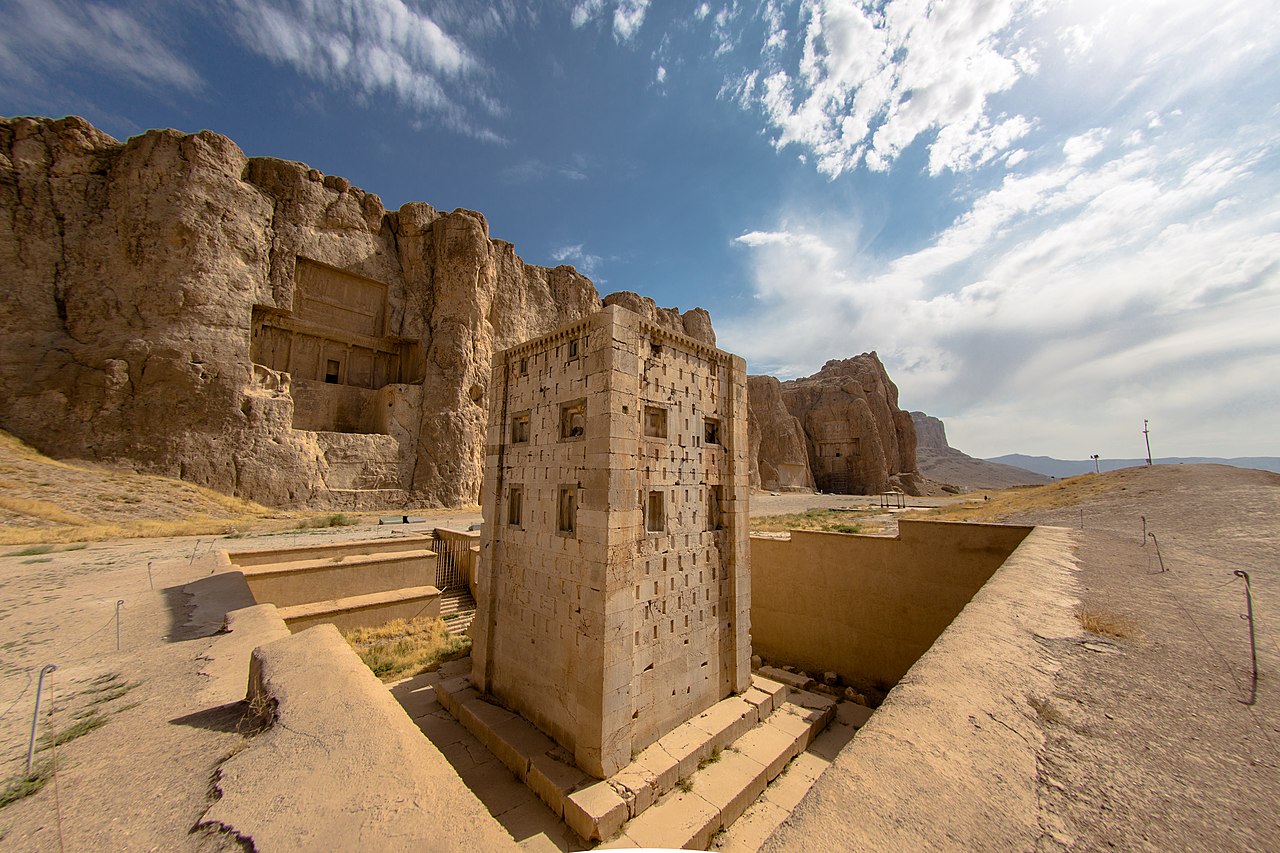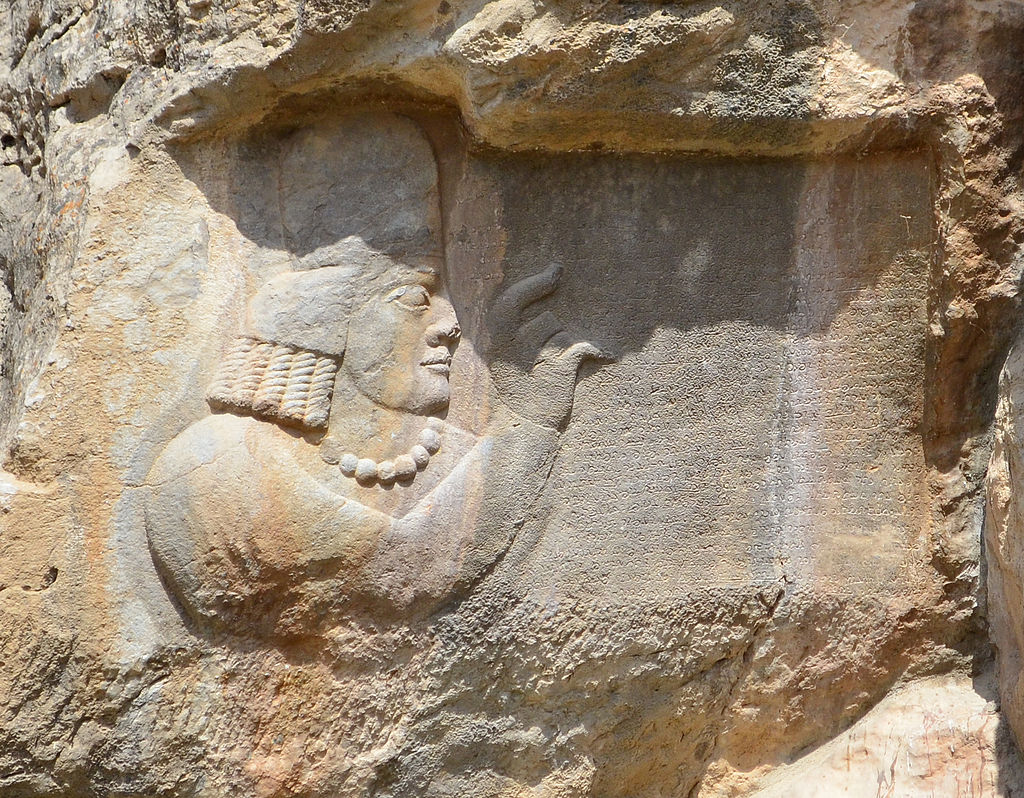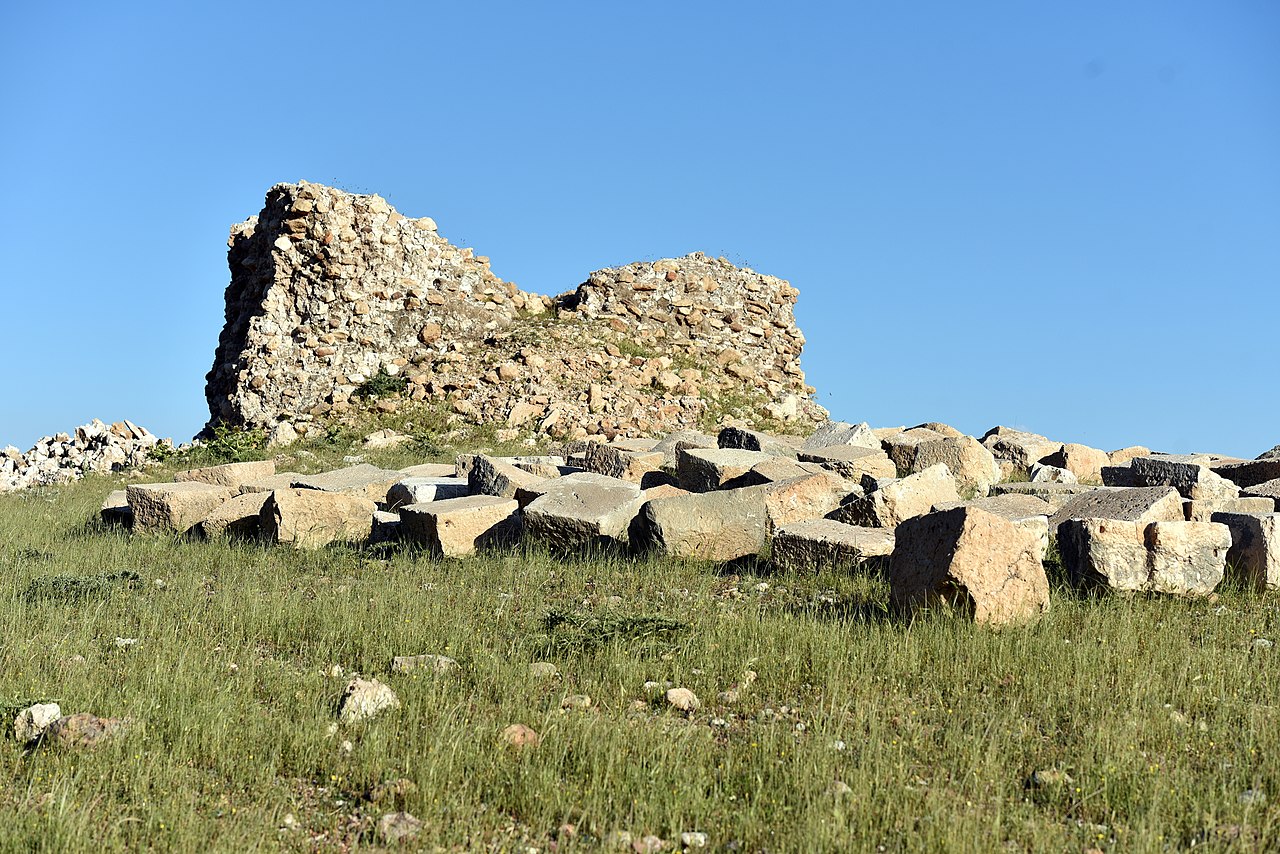Geography
Location and Landscape
We can begin to compare these inscriptions by investigating the significance of their locations. We can also analyze how each inscription is integrated within the surrounding landscape, and how landscape impacts the way in which we experience and read these texts.
-
Shapur's Great Inscription
Naqsh-e Rostam is the site of the royal Achaemenid necropolis and lies only a few miles north of Persepolis, the ancient capital. By placing his inscription at Naqsh-e Rostam, Shapur evokes the glory and grandeur of the Achaemenid Empire and lays claim to an ancient legacy of politico-cultural dominance, positioning himself as the successor to the Persian kings of old. The site's historical importance lends his inscription gravity and credibility.
At the same time, Shapur separates himself from the Achaemenid tradition, in that the Ka'ba-ye Zartosht stands a few hundred yards away from Naqsh-e Rostam's sweeping cliffs and shrinks beneath the relief carved for Darius II's tomb. Granted, Shapur had his Triumph carved into the cliff face, but his inscription was executed on a much smaller scale on a less conspicious surface. The distance between Shapur's inscription and the Achaemenid reliefs could suggest that Sasanian identity vacillated between the ancient and contemporary Persian worlds. Though Shapur inherited the Achaemenid legacy, he sought to distinguish himself from his forefathers and carve for himself a separate legacy.
-
Kerdir's Inscription(s)
Each landscape featuring Kerdir's inscription has its own unique characteristics, but the most notable commonality across all four locations is that Kerdir's inscription always accompanies royal iconography. Though Kerdir was not royal himself, he was practically commemorated as such. KKZ is directly beneath Shapur's inscription on the Ka'ba-ye Zartosht, KNRm is carved on the cliffs of Naqsh-e Rostam next to Shapur's Triumph, KSM is beneath the relief of Bahram II, and KNRb is between the investiture reliefs of Shapur and Ardashir at Naqsh-e Rajab. Kerdir must have been held in extraordinarily high regard by the Sasanian kings to have been awarded the honor of appearing in their monuments. Ardashir, Shapur, and Bahram surely felt he was due credit for some of their accomplishments and viewed him more as a peer than a mere priest.
Of the four locations, Naqsh-e Rostam and Naqsh-e Rajab are the most exceptional. The Triumph of Shapur is arguably the most important of the Sasanian rock reliefs at Naqsh-e Rostam and is also one of the largest. Thus, the KNRm inscription stands apart in terms of its size and archaeological significance. Similarly, Naqsh-e Rajab is the site of four royal rock reliefs, and while KNRb is much smaller than KNRm, it is inscribed above eye level and is surrounded on all sides by large-scale reliefs of Ardashir and Shapur, which makes for an awe-inspiring viewing experience.
-
Paikuli Tower / Narseh's Inscription
Naqsh-e Rajab is only half a mile south of Naqsh-e Rostam, and both are mere kilometers from Persepolis. Sar Mashhad is more distant (150 miles southwest of Persepolis), but Paikuli is the farthest of all--in fact, it's not even in Iran. Barkal, Iraq, the village nearest to Paikuli Tower, is 750 miles northwest of Persepolis (see the map above). Whereas Shapur and Kerdir's inscriptions are located nearer to classical Persepolis, Narseh's is located closer to the Sasanian capital of Ctesiphon. Additionally, whereas Shapur and Kerdir's inscriptions were made at locations with already-existing historical and cultural significance, Narseh conferred significance upon Paikuli through the very act of building and inscribing the Tower. The reason that Paikuli Tower is so far from the other locations is that Narseh had it built precisely where he assembled a group of dignitaries to affirm his right to rule. In contrast, Shapur and Kerdir chose locations closer to Persepolis likely for their ancestral significance.
In terms of landscape, Paikuli Tower is a man-made structure atop rolling grassy hills, a complete foil to the desert cliffs of Naqsh-e Rostam and Naqsh-e Rajab. The stark differences in location and landscape between Narseh's inscription and the rest mirror the unorthodox circumstances of Narseh's ascension and, as with Shapur's inscription, might symbolize severance from the Achaemenid and Parthian traditions.